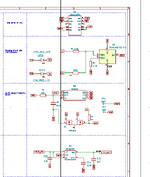Heena09
Junior Member level 3

Hi every one .
For the battery charging circuit, I used LTC4054 from an analog device. And its working fine but more heat dissipation is there and due to that, sometimes the chip is damaged. We tested Current rating and change it as given in datasheet for 450 mA current for charging.
But when we used the wall mount adapter, the chip heated more than the regular one. And the battery specification is 3.7V, 500mAh only.
Please guide me .
https://www.analog.com/media/en/technical-documentation/data-sheets/405442xf.pdf
For the battery charging circuit, I used LTC4054 from an analog device. And its working fine but more heat dissipation is there and due to that, sometimes the chip is damaged. We tested Current rating and change it as given in datasheet for 450 mA current for charging.
But when we used the wall mount adapter, the chip heated more than the regular one. And the battery specification is 3.7V, 500mAh only.
Please guide me .
https://www.analog.com/media/en/technical-documentation/data-sheets/405442xf.pdf


